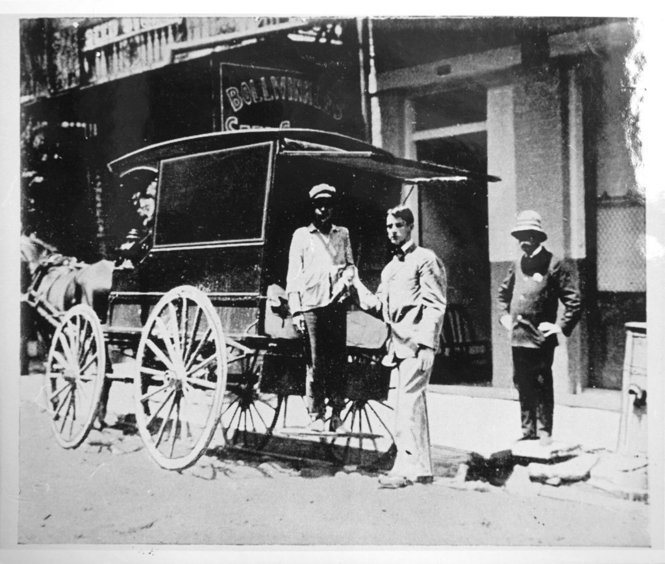
New Orleans, 1905: Screened horse-drawn ambulance during outbreak of Yellow Fever, the last to strike the city.
The hot, rainy days of summer are here. The number of tourists in New Orleans typically declines during the summer months, with the exception of the Essence Festival, housed in the air-conditioned Mercedes-Benz Superdome. Historically, however, New Orleanians sought to escape to cooler climates during the summer. In 19th-century New Orleans, many local residents would leave in June, not because of the heat, but because of the fear of contracting yellow fever.
Yellow Fever and New Orleans were intertwined from 1796 to 1905. The disease once was one of the most dreaded in North America, as it was concentrated in river towns and seaports. The virus was transmitted by an airborne vector, the mosquito. And New Orleans was the perfect breeding ground for mosquitoes, with its abundant swamps and poor sanitation, which gave the city a reputation for being a fever-ridden pesthole.
With the importation of millions of African slaves to the Americas, the yellow fever virus spread exponentially across the Caribbean. As trade expanded into New Orleans and the Gulf Coast, the movement of ships, cargo and immigrants further allowed the virus to spread.
Yellow fever was characterized by symptoms such as weakness, constipation, chills and high fever. It also produced body aches, headaches, depressed pulse and urination, nausea and delirium. Those afflicted could recover, but relapsed with deadly speed. Yellow fever was a hemorrhagic fever that saw those infected have massive internal and external bleeding. It became known as the black vomit.
In 1878, New Orleans had a population of 211,000; an estimated 40,000 residents left the city to avoid yellow fever. A large number of those who remained were infected with the disease; this affected group included several family members of native New Orleans author George Washington Cable. Cable had considered moving his family to the northeast to escape the yellow fever epidemic. Unfortunately, he did not, and his son and other family members succumbed to the disease.
Cable chronicled the deaths of an immigrant family from yellow fever in his novel The Grandissimes, a work about class struggles and race relations in 19th-century New Orleans. He wrote that yellow fever was commonly known as the “stranger’s disease” or the “stranger’s fever,” because so many immigrants perished from it.
Coincidentally, my great-great-great grandfather, Samuel Alexander, died from yellow fever in New Orleans on October 2, 1878 — roughly just a few days after the death of Cable’s son.
The New Orleans summer heat may not be that unbearable after all.
 NOLAbeings Multimedia artist Claire Bangser created NOLAbeings as a portrait-based story project that marries...
NOLAbeings Multimedia artist Claire Bangser created NOLAbeings as a portrait-based story project that marries...  Voodoo in New Orleans: Reviving history: New Orleans fortune telling This article takes a deep dive into the history of Voodoo in New Orleans, its hybridization with Catholicism, and its present-day place in the city's culture. The author visits fortune-tellers in the French Quarter, using their guidance as a tool for introspection rather than a deterministic predictor of the future. Through her experiences in New Orleans, the author feels a mystical connection to both the past and the future.
Voodoo in New Orleans: Reviving history: New Orleans fortune telling This article takes a deep dive into the history of Voodoo in New Orleans, its hybridization with Catholicism, and its present-day place in the city's culture. The author visits fortune-tellers in the French Quarter, using their guidance as a tool for introspection rather than a deterministic predictor of the future. Through her experiences in New Orleans, the author feels a mystical connection to both the past and the future. 